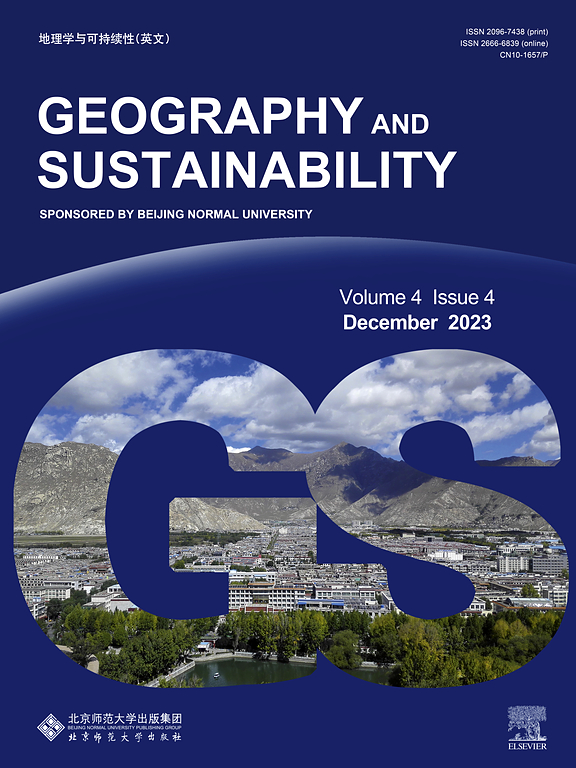中国通过改种和改进管理减少农田水土流失的机会
IF 8
1区 环境科学与生态学
Q1 GEOGRAPHY, PHYSICAL
引用次数: 0
摘要
中国的耕地长期受到水土流失的影响,造成经济损失并威胁土壤健康。整合作物转换和改进管理为控制耕地水蚀造成的土壤流失和促进可持续农业发展提供了一个前景广阔的战略。然而,以更少的投入优化作物构成涉及农业资源利用与环境成本之间的平衡。为了探索作物转换作为减轻耕地水土流失策略的潜力,我们建立了一个空间优化模型,根据现有的资源可用性重新分配各地级市不同作物的播种面积。我们的模拟结果表明,仅在中国进行作物转换就能将耕地水土流失总量减少约 13%。此外,将作物转换与改进农业管理措施相结合,估计可进一步减少 25% 的耕地土壤侵蚀。包括玉米、小麦和水稻在内的谷物在减少耕地土壤侵蚀方面具有巨大潜力。将玉米主产区北移可大幅减少土壤侵蚀,减少幅度为过去耕地土壤侵蚀的 10% 到 19%。这些结果为制定区域战略以减轻中国的水土流失挑战,同时最大限度地利用现有农业资源提供了启示。本文章由计算机程序翻译,如有差异,请以英文原文为准。

Opportunity for mitigating soil loss by water erosion in cropland through crop switching and improved management in China
Cropland is persistently affected by soil loss by water erosion in China, which causes economic loss and threatens soil health. Integrating crop switching and improved management provides a promising strategy for controlling soil loss by water erosion in cropland and promoting sustainable agriculture. However, optimizing crop composition with fewer inputs involves balancing agricultural resource use with environmental costs. Aiming to explore the potential of crop switching as a strategy for mitigating soil erosion in cropland, we develop a spatial optimization model that redistributes the sown areas of different crops in each prefecture-level city based on existing resource availability. Our findings gained from our simulations show that crop switching in China alone can reduce total soil erosion in cropland by an estimated 13 %. Furthermore, combining crop switching with improved agricultural management practices can further reduce soil erosion in cropland by an estimated 25 %. Cereals including maize, wheat, and rice demonstrate significant potential for reducing soil erosion in cropland. Shifting major maize-producing areas northward could result in a substantial decrease in soil erosion, ranging from 10 % to 19 % of historical soil erosion in cropland. These results offer implications for formulating regional strategy in mitigating soil erosion challenges in China while maximizing the benefits from existing agricultural resource.
求助全文
通过发布文献求助,成功后即可免费获取论文全文。
去求助
来源期刊

Geography and Sustainability
Social Sciences-Geography, Planning and Development
CiteScore
16.70
自引率
3.10%
发文量
32
审稿时长
41 days
期刊介绍:
Geography and Sustainability serves as a central hub for interdisciplinary research and education aimed at promoting sustainable development from an integrated geography perspective. By bridging natural and human sciences, the journal fosters broader analysis and innovative thinking on global and regional sustainability issues.
Geography and Sustainability welcomes original, high-quality research articles, review articles, short communications, technical comments, perspective articles and editorials on the following themes:
Geographical Processes: Interactions with and between water, soil, atmosphere and the biosphere and their spatio-temporal variations;
Human-Environmental Systems: Interactions between humans and the environment, resilience of socio-ecological systems and vulnerability;
Ecosystem Services and Human Wellbeing: Ecosystem structure, processes, services and their linkages with human wellbeing;
Sustainable Development: Theory, practice and critical challenges in sustainable development.
 求助内容:
求助内容: 应助结果提醒方式:
应助结果提醒方式:


